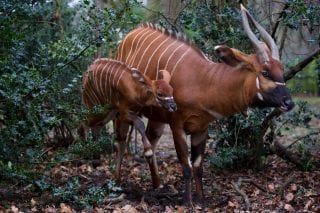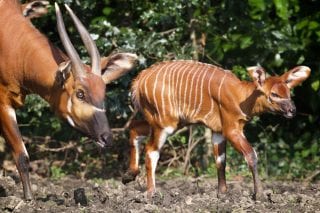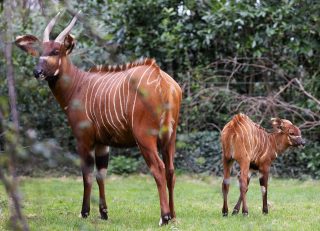Fun Facts
Size
The bongo is the largest and heaviest forest antelope.
Bald Patches
In order to keep their horns out of the way while running through the dense forest, eastern bongos are known to tilt their chins up, causing their horns to lie against their back. Over time this causes them to have bald patches on their back.
Critically Endangered
According to the International Union for Conservation of Nature, there is estimated to be 70-80 eastern bongos left in the wild.



